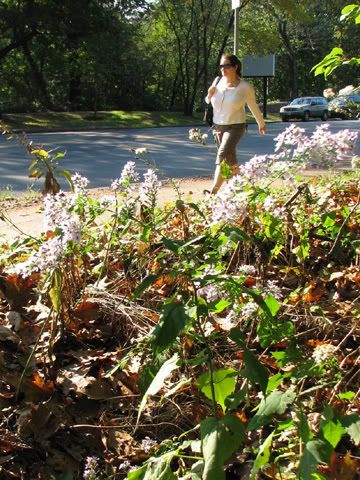365 urban species. #269: Heart-leaf Aster

Photos by cottonmanifesto. Location: Brookline Ave, Boston.
Urban species #269: Heart-leaf aster Symphyotrichum cordifolium
In New England the last of the wildflowers are blooming. The asters as much as the changing leaves signal the arrival of autumn. In the city we have plantings of New England aster, Symphyotrichum novae-angliae and New York aster ,Symphyotrichum novi-belgii, tall shrublike plants with relatively large purple flowers. By comparison heart-leaf aster is scrawny and weedy, but like all weeds it has the dignity of wildness. It "chose" to grow along the roads, and on the edges of the wooded park. It doesn't ask to be watered, or for human hands to remove its competitors--no one "weeds" for the weeds.
Older field guides, and even some contemporary sources, use the genus name Aster for most of the asters, which seems logical. As it turns out, the huge and complicated family Asteraceae gets more huge and complicated all the time. Now it is more accepted to only use the genus name Aster for certain species native to Eurasia and their close relatives, while ten other genus names have split off. The generic term "aster" is still in common usage, and well it should be. Otherwise, shall we sing the praises of the autumn blooming symphyotrichum? Let's not.
Heart-leaf aster is also known as blue wood aster. The last of this years'
butterflies will feed on this flower's nectar, before they migrate or expire. When the plant dries away, it will continue to stand, holding its seeds up to offer to the arriving juncos and redpolls.
